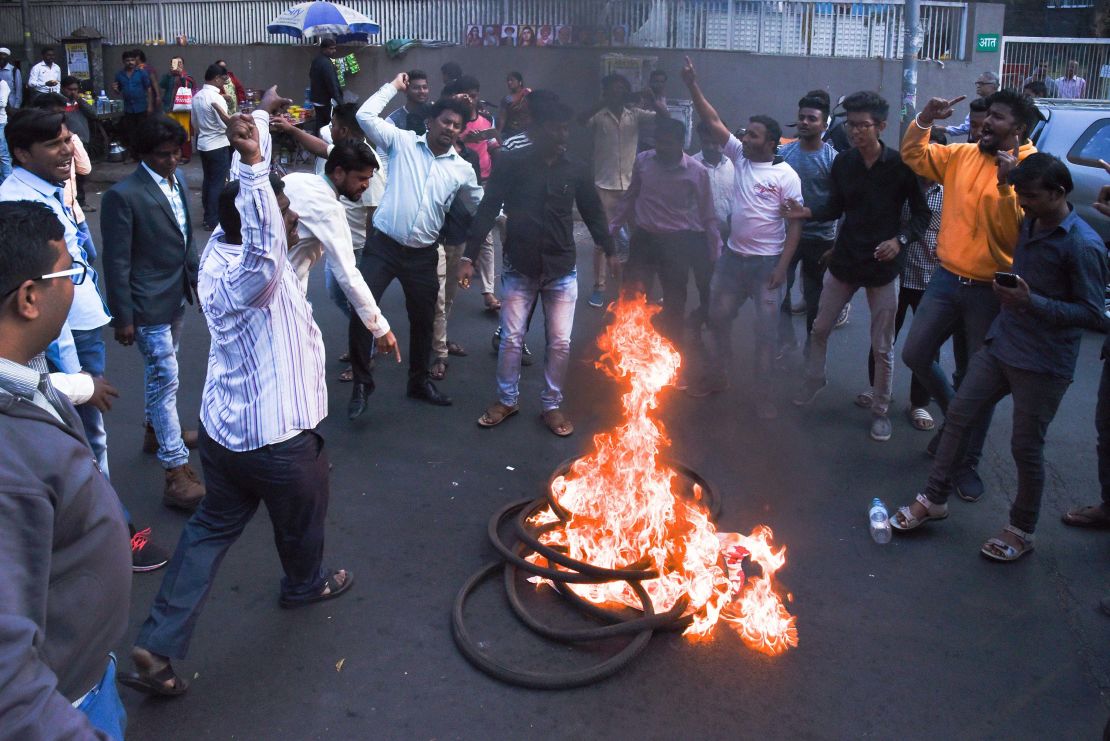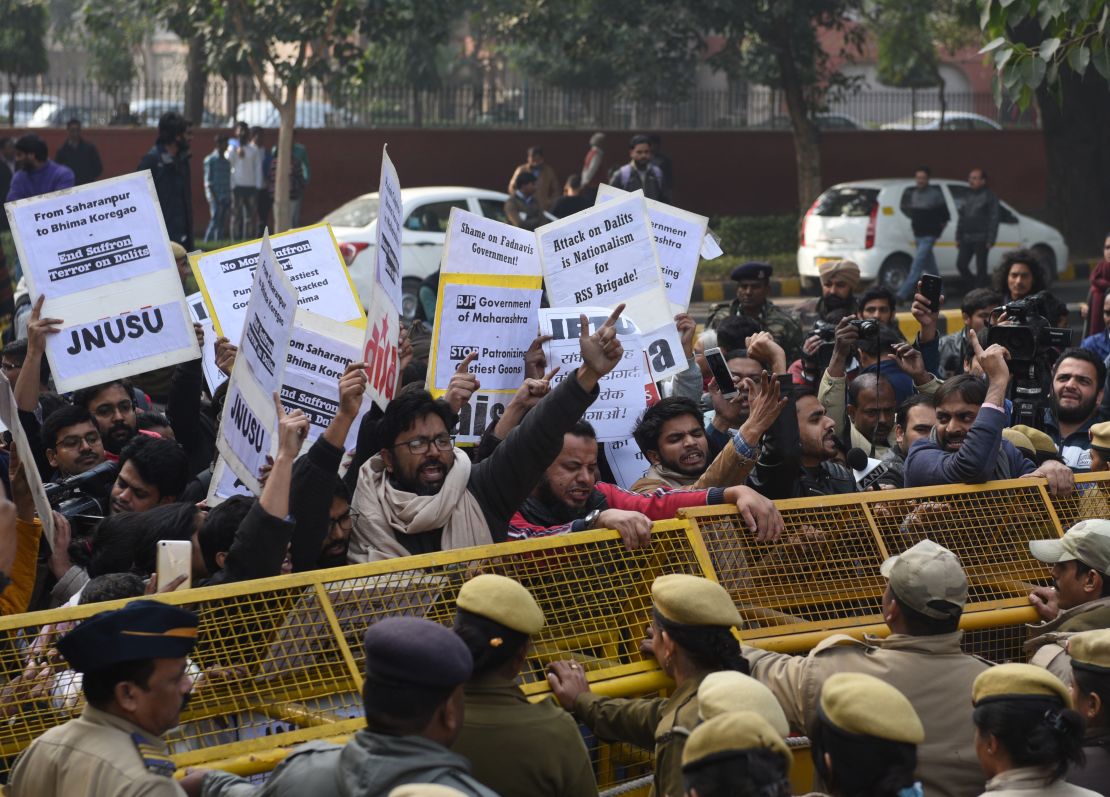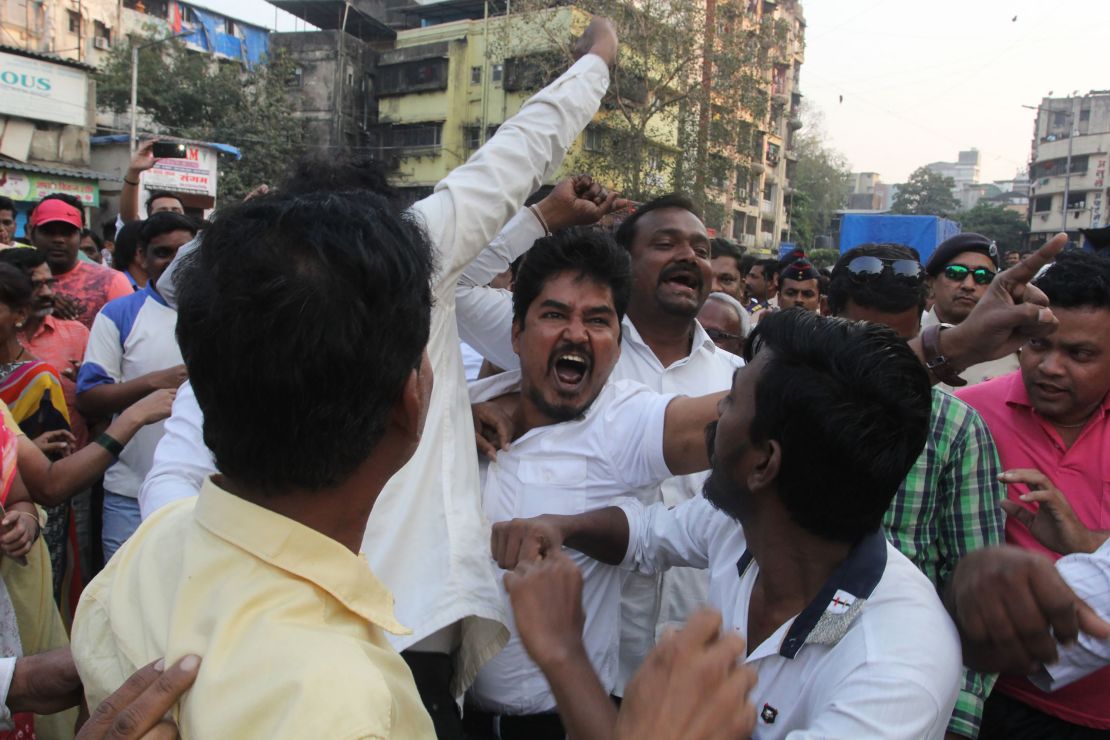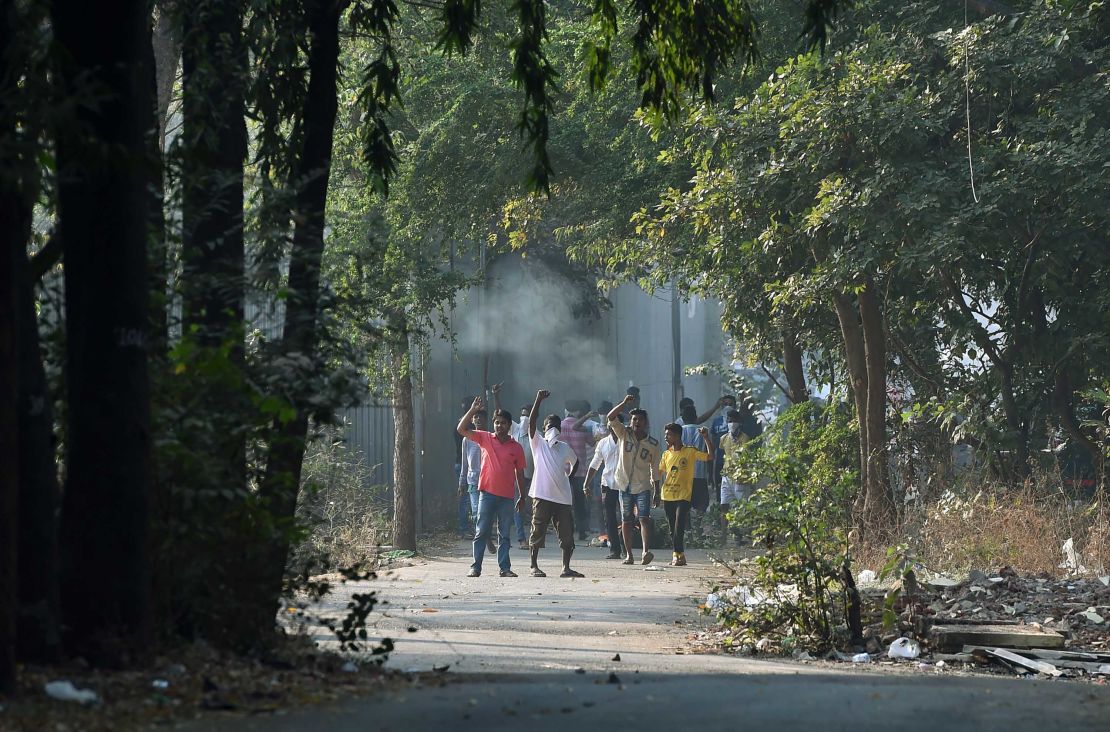Security forces were out in full force in India’s financial capital Mumbai this week, as members of the country’s low-caste Dalit community demonstrated against alleged violence by right-wing Hindus.
The unrest was concentrated in suburban areas on the outskirts of India’s largest city, which also saw transport disruptions.
There were also sporadic protests across the state of Maharashtra, which Mumbai is located in.

How did it start?
It all began when tens of thousands of Dalits, who rank at the bottom of India’s ancient Hindu caste hierarchy, gathered in the village of Bhima Koregaon, 170 kilometers (105 miles) outside of Mumbai, on New Year’s day to celebrate the 200th anniversary of a battle in which British colonial forces staffed with local Dalit fighters defeated a numerically superior army belonging to upper caste rulers of the region.
In the years since, many Dalits have come to regard the battle as an important historical moment when their community stood up against oppressive higher caste Hindus.
This year, Dalit activists claim that the annual commemoration was interrupted by right wing Hindu nationalists, who they say threw rocks at the gathering.
The situation deteriorated as riots broke out and two men died in the chaos, according to local media.

What were they commemorating?
The battle between British-led forces and the local Indian rulers occurred during a period of British military expansionism in India.
In this particular battle that is memorialized at Bhima Koregaon, 500 Dalit soldiers are said to have defeated 28,000 soldiers in the ruling army of the upper-castes.
Every year, Dalits travel from across India to pay homage at the memorial in honor of the soldiers.
The numbers may be debated, said Chandra Bhan Prasad, an independent researcher and writer on Dalit issues, but what is clear is that the ruling army was much larger.
Further, the anniversary of the battle at Bhima Koregaon is a historical moment of triumph for Dalits against people who they viewed as oppressors. Although the battle was fought for the British, it had a dual significance for the Dalit soldiers.
“They were also fighting for their own dignity,” Prasad said.

How does the caste system work?
In Hinduism’s caste system, Dalits are traditionally at the bottom rung. Members of the higher caste sometimes consider them impure, and in certain places, they still aren’t allowed to enter the homes or temples of the upper-caste community or share utensils with them.
This practice, despite being unconstitutional, is still prevalent in parts of India, and Dalits continue to struggle with instances of discrimination, exclusion and violence.
Decades of economic growth and rise of technology have led to Dalit empowerment, however, and Dalit political leaders and entrepreneurs are prominent today. In July 2017, Ram Nath Kovind, a member of the Dalit community, was elected India’s 14th president. (India’s first Dalit head of state was KR Narayanan, who was the country’s President in the late 1990s.)
But despite considerable advancement, there is still a long way to go.

What’s the wider context?
Wednesday’s protest is part of a reaction to what activists claim is continued caste-based oppression and the rise of right-wing Hindu groups since the election of Prime Minister Narendra Modi and his Hindu nationalist Bharatiya Janata Party in 2014.
One of the most prominent flare ups recently occurred in July 2016, when Dalits took to the streets to protest after a family of leather workers was reported to have been beaten up, flogged and paraded in a town in the western Indian state of Gujarat, after they were accused of skinning a dead cow.
Traditionally, Dalits have done jobs like leatherwork because the work is considered impure by upper-caste Hindus.
These protests speak to a collective anguish in this democracy that a significant faction continues to face this permanent discrimination and violence,” said Dhrubo Jyoti, a journalist at the Hindustan Times who has worked on Dalit issues.
“(They) were seen as a marker, that despite the Constitution, despite BR Ambedkar (a Dalit civil rights leader), despite all the strides that Dalits have made over all the generations, they continued to be oppressed.”
